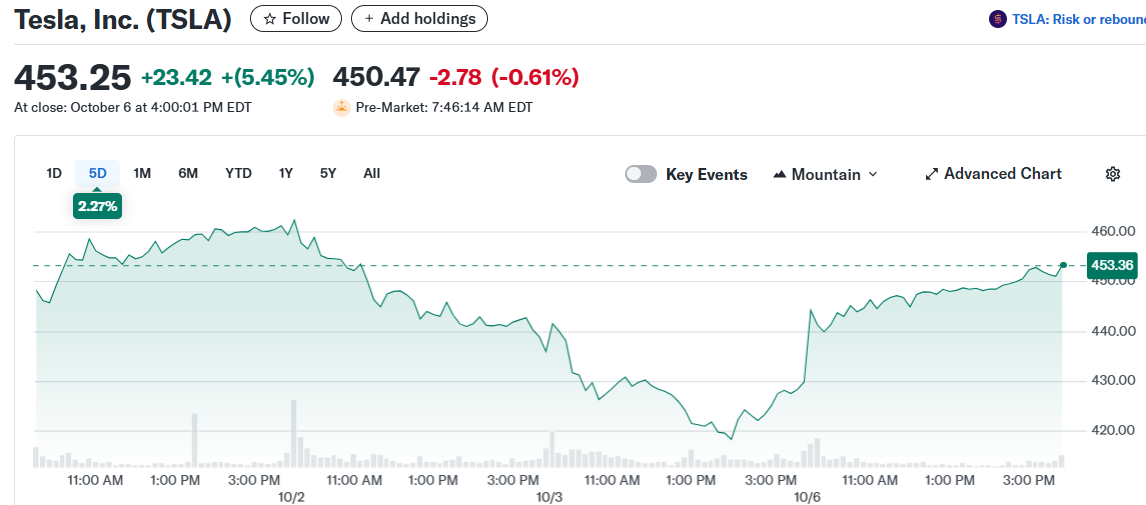TLDR
- Tesla unveils lower-priced Model Y variant on October 7, 2025, following teaser videos posted on X that sparked investor interest.
- Stock surged 5.45% to $453.25 after the announcement, as the company seeks to combat declining sales across global markets.
- Federal EV tax credits worth $7,500 expired in September, effectively increasing prices and creating demand for cheaper options.
- The new vehicle replaces Tesla’s canceled $25,000 car plans and will use existing manufacturing platforms to reduce costs.
- Global sales dropped in 2024 and continue falling in 2025, including China’s first-ever annual decline.
Tesla unveiled a lower-priced Model Y on October 7, 2025, after building anticipation with teaser videos on X. The announcement sent shares up 5.45% to $453.25 as investors welcomed the company’s response to falling sales.
The automaker posted two clips over the weekend. One showed headlights emerging from darkness with smoke effects. The other displayed a spinning wheel bearing the Tesla logo, with both ending on “10/7.”

This represents a change from CEO Elon Musk’s original vision. Reuters reported last year that Tesla scrapped plans for an entirely new $25,000 electric vehicle. The new model uses existing manufacturing platforms instead of starting from scratch.
Price Point and Market Positioning
Musk previously stated the vehicle would cost under $30,000 with federal tax credits. However, those $7,500 credits expired at the end of September, raising effective prices across the board.
Current Model Y versions start around $49,000 when well-equipped. The average new EV sells for approximately $57,000 before incentives, according to Kelly Blue Book data. Traditional gas cars average $49,000.
“The desire to buy the car is very high. Just that people don’t have enough money in the bank account to buy it,” Musk explained on the July earnings call. “So the more affordable we can make the car, the better.”
Sales Challenges Mount
Tesla needs this launch. Global vehicle sales fell throughout 2024 and are declining again in 2025. China sales are experiencing their first annual drop after consistent growth in previous years.
The company’s automotive gross profit margin, excluding regulatory credits, dropped to 15% in Q2. That’s half the 30% margin achieved in Q2 2022 when prices were higher and competition was lighter.
Competition has intensified in China and Europe. Musk’s political activities have also affected brand perception in some markets. EVs capture roughly 8% to 10% of U.S. new car sales currently.
Production Timeline and Strategy
Tesla completed “first builds” in July after initially targeting June production. The company said customer deliveries would begin in Q4 2025. Earlier this year, a refreshed Model Y launched with updated lighting and a rear touchscreen.
Sources told Reuters that Tesla also plans a budget Model 3 sedan variant. The strategy focuses on expanding the customer base rather than introducing revolutionary new designs.
One concern is cannibalization. A cheaper Model Y with similar dimensions could draw buyers away from higher-margin versions. Investors will compare features and range to gauge profitability potential.
The tax credit expiration boosted September sales to record levels as buyers rushed to qualify. Analysts expect slower sales in Q4 unless the affordable model generates substantial demand.
Tesla has emphasized artificial intelligence, robotaxis, and humanoid robots recently. But affordable vehicles remain essential to reaching 20 million annual sales within a decade, a milestone linked to Musk’s compensation package.
The company provided no details about an in-person launch event, contrasting with past product reveals that featured elaborate presentations.


